The Therapist’s Use of Self
Author: Leonard A. Carlino | Published in: IIBA Clinical Journal - Issue: 1993 - Vol 5 - Num 2 | Date of publication: 1993
Click here to read the article in PDF format ...
One of the characteristics that attracted me to bioenergetics was the ability of Dr. Alexander Lowen to express himself in the therapeutic process, much as an artist uses a canvas as a medium for creativity. In Physical Dynamics of Character Structure (1958), Lowen discusses the distinction between a passive association technique, which he refers to as analysis from above, with a more active technique, which he calls analysis from below. He points out the early contributions of Ferenczi to this latter approach. But the real contribution came from Reich, when he began to attack patients’ character structures. In Reich's Character Analysis (1949), we see just how active Reich assumed the therapist’s role should be. Of course, when he began to use body intervention, there was no question that his more active therapy was radically different than the passive associative approach.
I would like to look at how the active approach demands the therapist’s active use of self in therapy. I would also like to show how psychoanalytic techniques today encourage the therapist to become more active, thereby becoming more similar to the approach of bioenergetics.
Originally, psychoanalytic thought believed that therapists should not involve themselves in the analytic interaction. This was to eliminate countertransference from contaminating the analytic process, countertransference being the unconscious responses of the therapist to the patient. However, classical psychoanalysis is faced with a dilemma. It now acknowledges that no analyst is ever fully analyzed. That is to say that no one ever reaches a point where all his or her unconscious material becomes conscious. Rather, this process is a lifelong one, and consciousness exists along a continuum from relatively unconscious to relatively conscious. This being the case, every analytic interpretation, no matter how passive, has elements of the analyst’s unconscious material. Therefore, the analyst’s interventions are always to some extent tainted by the analyst’s unconscious and, therefore, this constitutes countertransference contamination.
Psychoanalytic thought also tried to make a distinction between the real relationship and the transference-countertransference relationship. The real relationship consists of those interactions between patient and therapist that were devoid of unconscious projections and based on accurate perceptions. This was contrasted with the transference-countertransference relationship which included undiscriminating, nonselective repetition of the past which is inappropriate and ignores or distorts reality.
However, since no one is ever without some unconscious contamination, there cannot be any definitive distinction between the real and transference-countertransference relationship. Rather, reality is seen now as a relative concept that only has meaning in the therapeutic setting if mutually agreed upon by both patient and therapist.
Since we can’t make a clear distinction between the conscious and unconscious material of the therapist, and since the distinction between the real relationship and transference-countertransference relationship is relative, what is a therapist to do? The answer in present day analytic thinking is for the therapist to actively use the countertransference. In essence, therapists are encouraged to trust the emotions that the patient stimulates in them. The rationale is as follows: The patient stimulates his or her disavowed affect in us in a hope that we can tolerate the affect and respond to it. The patient learns to contain and integrate his or her affect as the therapist beams it back to him or her. The beaming back cannot be only from a neutral intellectual stance because what is essentially an affective interaction and relearning experience must involve an emotional response from the therapist. In other words, the “emotional reality” between patient and therapist is the “only reality.” Their rationale continues by stating: Patients come to us because awareness to guide them through their own self-discovery. They rely on us to make the best decision possible and to protect them from unnecessary pain as they make their journey. They give us the power not to presume to know what is right for them, but to listen, invite their cooperation, and then make the best decision we can about what is most therapeutic. It is with this understanding that present day psychoanalysis frames the active use of countertransference.
When psychoanalysts use the countertransference actively, they call it sharing of the countertransference. Little (1951) was the first to champion such disclosure. She states that the only way to avoid being overwhelmed by the experiencing of merging with the patient’s problems is to admit one’s countertransference to the patient or to become emotionally active in the relationship. Bioenergetic techniques offer an excellent modality for the therapist to become emotionally active as Little suggested.
Maroda (1991) states that the underlying principle that should guide such disclosure is that the therapist must reveal whatever is necessary to facilitate the patient’s awareness and acceptance of truth.
McLaughlin (1981) emphasizes authentication of the realities of the relationship rather than the reality of the patient. Viewing the relationship in this light has a great leveling effect in that all that is important is the truth, whatever that might be. Love is not more important than hate; integrity is not more important than a lack of character. The most essential attribute for the therapist is an unyielding commitment—a commitment to the truth, to maintain the integrity of the relationship and the process, and to being aware of how the transference molds the countertransference and vice versa. We in bioenergetics have additional tools to keep us truthful. One is the truth of the body as seen in the patient, and the second is the truth as perceived in the therapist’s own body.
Maroda (1991) states that part of the original and ongoing motivation of the therapist’s vocational choice is the need to both heal and be healed. Refusing to acknowledge this as well as other significant aspects of transference-countertransference interplay can result in an unnecessary, limited, stalemated or destructive treatment. If a strong countertransference cannot be recognized and dealt with directly in treatment, it will inevitably be acted out in some way. The acting out can take the form of keeping a nontherapeutic distance from the patient or refusing to merge with the patient out of fear of being out of control. Or, it can take the form of obtaining some direct gratification from the patient either during the treatment or following termination.
Rather than the psychoanalytic term of sharing the countertransference, I prefer the term the therapist’s use of self. This, I believe, is more consistent with bioenergetic tradition and the importance of self-expression for a healthy, functioning person. At the same time, it leaves the term countertransference for situations where the unconscious is the predominant factor in the therapeutic interaction.
I would now like to mention some guidelines and precautions to be considered by the therapist in his or her use of self in therapy (Maroda 1991). The first step is for the therapist to be keenly aware of his or her own strengths and weaknesses. For us in bioenergetics, this necessitates a thorough understanding of our own characters and their limitations when interacting with other character structures.
Second, such interventions should primarily be for the patient’s cure and should never be undertaken solely for the purpose of the therapist’s self cure.
Third, the use of self should be seen along a continuum in the therapeutic relationship. A patient will move from one level to the next as he or she becomes capable of handling greater degrees of intense feeling and achieves a greater sense of himself or herself or, as the analyst would say, as the patient achieves a greater capacity for object relations. This is a useful guideline for the management of dual relationships. Some patients will be further along on this continuum and, therefore, will be capable of sustaining dual relationships to different capacities. This is especially applicable for therapists whose patients are also their trainees.
Fourth, the therapist needs to be thoroughly grounded in his or her own bodily awareness. This necessitates the ability to contain a strong affective charge as well as the ability to express a strong affective charge when either is appropriate. The more grounded the therapist, the stronger the therapeutic use of self intervention can be.
Fifth, the goal of the use of self is not necessarily for the therapist to feel differently than the patient’s significant others; rather, it is for the therapist to handle his or her feelings more constructively than did the patient’s significant others. Ultimately this enables the patient to be aware of his or her own feelings and behaviors and to take responsibility for both.
Sixth, there is no single correct way to apply the use of self in therapy, but if the therapist is honest, direct, non-judgmental and comes from the heart, it will be the most effective.
Finally, a word of caution concerning boundaries. Therapists need to have strong and stable boundaries, particularly when treating patients who do not have them. The therapist also needs to have boundaries that are permeable to allow for reasonably controlled regressive experiences. The therapist needs to be able to share the patient’s experience of primitive affective states rather than simply observing them. Sharing means that the therapist must be relatively undefended and open to experiencing potentially uncomfortable feelings, such as a patient’s confusion, anxiety, craziness, despair, anger and sexual excitement.
Under no circumstances should the use of self be confused with advocating dismissal of boundaries in the therapeutic relationship. The purpose of the use of self is to offer alternatives to facilitate the integrity of the therapeutic situation. However, since the need to express oneself in an intense interpersonal situation is so basic and inescapable, the therapist’s inhibition of affect can actually lend itself to the therapist’s acting out. Therefore, there needs to be an equilibrium between the therapist’s boundaries and the affective expression of his or her use of self.
In conclusion, I would like to say a word on how the use of self, if integrated with these guidelines, contributes to the ethical behavior of the therapist. The best hedge against abusing patients is the degree to which the therapist, as instrument, has evolved. The more the therapist is grounded in his or her self-awareness and self-possession, the greater will be his ability for constructive use of self in the therapeutic relationship. Ultimately, the therapist’s behavior would not be dictated by ethical rules coming from outside the self; rather, behavior should be directed from a sense of inner, energetically driven principles.
References
- Little, M. 1951. Countertransference and the patient’s response to it. International Journal of Psych-Analysis 32.
- Lowen, A. 1958. Physical dynamics of character structure. New York: Gruñe and Stratton.
- Maroda, K. 1991. The power of countertransference: Innovations in analytic technique. England: John Wiley & Sons.
- McLaughlin, J.T. 1981. Transference, psychic reality and countertransference. Psychoanalytic Quarterly 50.
- Reich, W. 1949. Character analysis. New York: Orgone Institute Press.









![The Therapist’s Use of Self [EN]](/images/TheTherapist_Carlino.png)


